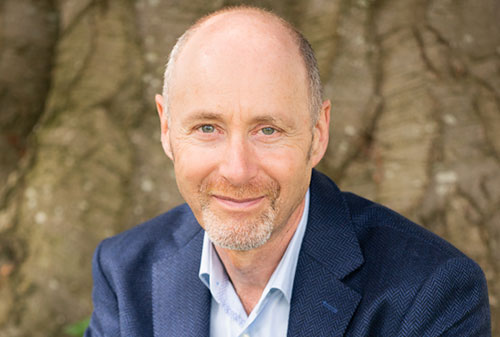“Why is it that with all the information available today on how to be successful in small business, so few people really are?” Michael Gerber
When it comes to building a better business and one that provides more of the rewards that you want there are two kinds of change required – visible change and invisible change.
An example of the visible kind are changes such as the development, integration and fine-tuning of effective processes. The invisible kind of change is in the mindset or quality of mind that is required to facilitate and support the visible change.
Often, we can be guilty of putting the cart before the horse by focusing only upon visible, external change. The consequence of this can be that progress is far slower than we would like. The thought of change, even changes we want to make, can often bring up a lot of insecurity. For example, announce to a team or a business that there are going to be some changes and often there will be moans and groans rather than jumps for joy.
All businesses have a culture and that culture can be one that readily embraces or even relishes change or one that resists it. My experience is that the more common response to impending change is reluctance and resistance.
The hidden secret in successfully implementing change is understanding that, first and foremost, it has to take place in hearts and minds before the visible change. It is qualities such as acceptance, resilience, creative-thinking, problem-solving, teamwork, inner motivation and appropriate tolerance of making mistakes (which are inherent in making meaningful change) that make change easy, effortless and enjoyable.
Once this is understood then the only question becomes how do you facilitate the invisible change?
First of all the invisible change has to be seen as a key factor. I call it invisible change because many people are not even aware of their own state of mind or the culture they have within their own business. They may be aware that progress seems difficult and slow but without understanding why, the tendency is to blame – that could be blaming ourselves, other people or circumstances. I have heard many discouraged advisers say that they think they lack motivation, discipline or whatever quality they think they need but don’t have!
Once invisible change is understood as a prerequisite to successful visible change then by far the most effective solution I have seen and used is sharing an understanding of how the human mind really works. This understanding, by itself and with no requirement for any techniques or practices, frees people from states of mind that inhibit change, such as feelings of fear, insecurity and discouragement.
The fact is that feelings are not directly caused by circumstances. The only thing we can ever feel is our own thinking. So, in the face of change we feel our thinking about the proposed changes and not the changes themselves. This is why we can get fresh thinking and change our minds about anything – if our feelings came directly from circumstances then this would not be possible.
Feelings of fear, insecurity and discouragement perpetuate when people think they are coming directly from their circumstances because it creates a victim mindset. If we think that external circumstances are responsible for how we feel then the natural, and understandable, by-product of this is insecurity because we fear what we think has control over us.
However, once people grasp that their experience is generated from the inside out (i.e. via thought rather than circumstances) then the by-product of this is that they quickly return to clarity of mind, a sense of perspective and natural in-built resilience, which are the lubricant of successfully implementing change.
This understanding of where our experience comes from is incredibly important and especially so for those who lead change. If, as a leader, change seems like a significant problem and full of fear to you then you haven’t got a hope of settling the minds of those you lead. They are going to pick up on whatever the leader is feeling.
So, let’s just summarise and encapsulate the core message of this piece. We know that in the business world it is a choice between changing voluntarily or being forced to change – something that anyone who has been in financial services for any length of time will know only too well. We also know that the thought of change can generate fear and insecurity for many people.
The foundation of an engaged workforce and one that embraces and relishes change is in their healthy psychological functioning. When people are in clear, unburdened and fully present states of mind they have access to all the qualities that are the foundation of real and sustainable progress.



